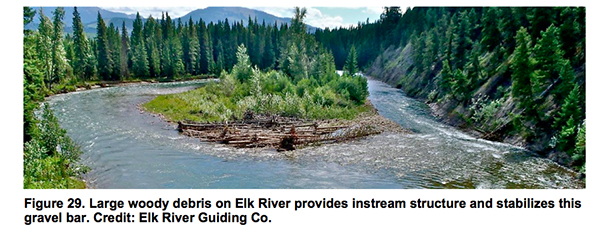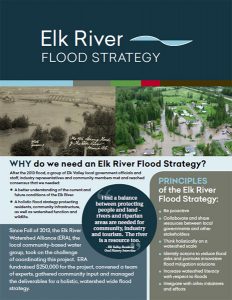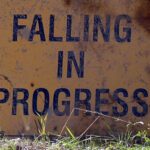Home »

Flooding, the environment and us
By Lee-Anne Walker
Floods are a problem for people, yet the environment can benefit from this natural disturbance.
A healthy watershed benefits tourism, recreation and our well being, and it is important to consider the effects that floods have on the environment. This article goes one step further and illustrates how by maintaining a healthy watershed we could actually mitigate the negative effects of flooding.

Riparian areas, the transition area between the Elk River and upland areas, contain some of the most biologically diverse wildlife habitats found in the valley. These ecosystems protect stream-banks from erosion with their solid root masses and ground cover, filter runoff from surface and subsurface contaminants, and provide abundant water storage.
Wetlands found in these riparian areas are also important components of the watershed. Wetlands act as water purifiers, as they intercept sediments and nutrients from overland runoff, which benefits both the downstream rivers and the wetlands. Flooding in wetlands generally results in an increase in production in the flood chain. Wetlands also act as fish nurseries, carbon sinks, and wildlife breeding grounds, and act like sponges retaining floodwaters, slowing flows and lowering flood peaks.

Under natural conditions, floods are generally beneficial to many plants, fish and wildlife, and are a critical process for many ecosystems. Black cottonwood trees, dominant along the Elk River’s riparian forest depend on periodic flooding for seed dispersal and growth. The seeds need newly exposed sand bars that are left behind after a flood in order to germinate. Similarly, fish populations can benefit from high flow events. Floods contribute nutrients and can increase the macro-invertebrate densities that provide food for many fish.
Floods can also create new fish habitats. Streams are the healthiest when there are a large variety of microhabitats available within them, which are created by having variation within a stream. The Elk River is generally a ‘riffle-pool’ channel type, which provides very quality high fish habitat. By adding large woody debris, scouring out pools and undercutting banks, floods can create new habitats for fish.
However, floods that are too powerful can actually be damaging to ecosystems and species populations. Juvenile and recently hatched fish are the most vulnerable, and since bull trout spawn in the fall and hatch in the spring, they are the weakest as spring floods occur. As a result, flooding can negatively affect bull trout in Elk River tributaries.
Further, many flood mitigation actions can negatively impact fish. Structures such as dikes and riprap remove fish habitats from stream-banks. They also change stream morphology such that local sediment deposition is inhibited and there is an increase in sheer forces, resulting in degraded conditions. This degradation can result in an overall reduction of fish habitat diversity and value.
With new innovation in bioengineering stream-banks, traditional hard structures can be enhanced with vegetation. Vegetated riprap, for example, uses the natural strength of plant root mass to provide structure and reduce erosion, and can also be created to provide fish habitats. Further, because wetlands can retain floodwaters, enhancing existing wetlands and creating more, are practical and environmentally friendly ways to mitigate the effects of floods on existing structures.
 The best way to mitigate damages from floods is to restrict building in floodplains in the first place. Floods will happen again, so it is best to stay out of the way or at least be better prepared for the next event. Rivers naturally flood, and by trying to stop this process we can damage the environment that we are trying to protect and reduce the watershed’s resilience to buffer the negative effects flooding has on us.
The best way to mitigate damages from floods is to restrict building in floodplains in the first place. Floods will happen again, so it is best to stay out of the way or at least be better prepared for the next event. Rivers naturally flood, and by trying to stop this process we can damage the environment that we are trying to protect and reduce the watershed’s resilience to buffer the negative effects flooding has on us.
To find out more about the floodplain in the Elk Valley, look for next week’s Elk River Current article or access the Elk River Flood Strategy report at www.elkriveralliance.ca.
Lead image: The Elk River flood of 2013, north of Elkford. Ian Cobb/e-KNOW file photo
– Lee-Anne Walker, MA Environment and Management, is Community Water Champion and Executive Director of the Elk River Watershed Alliance (ERA).







